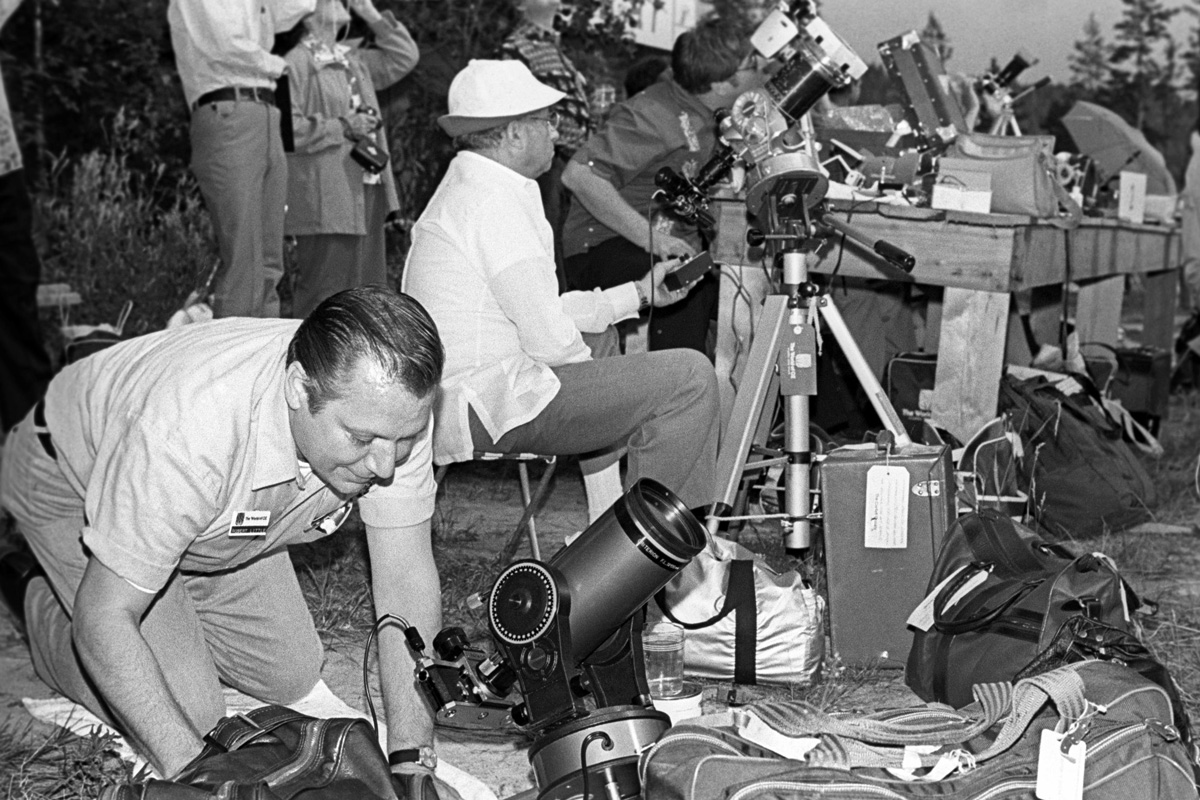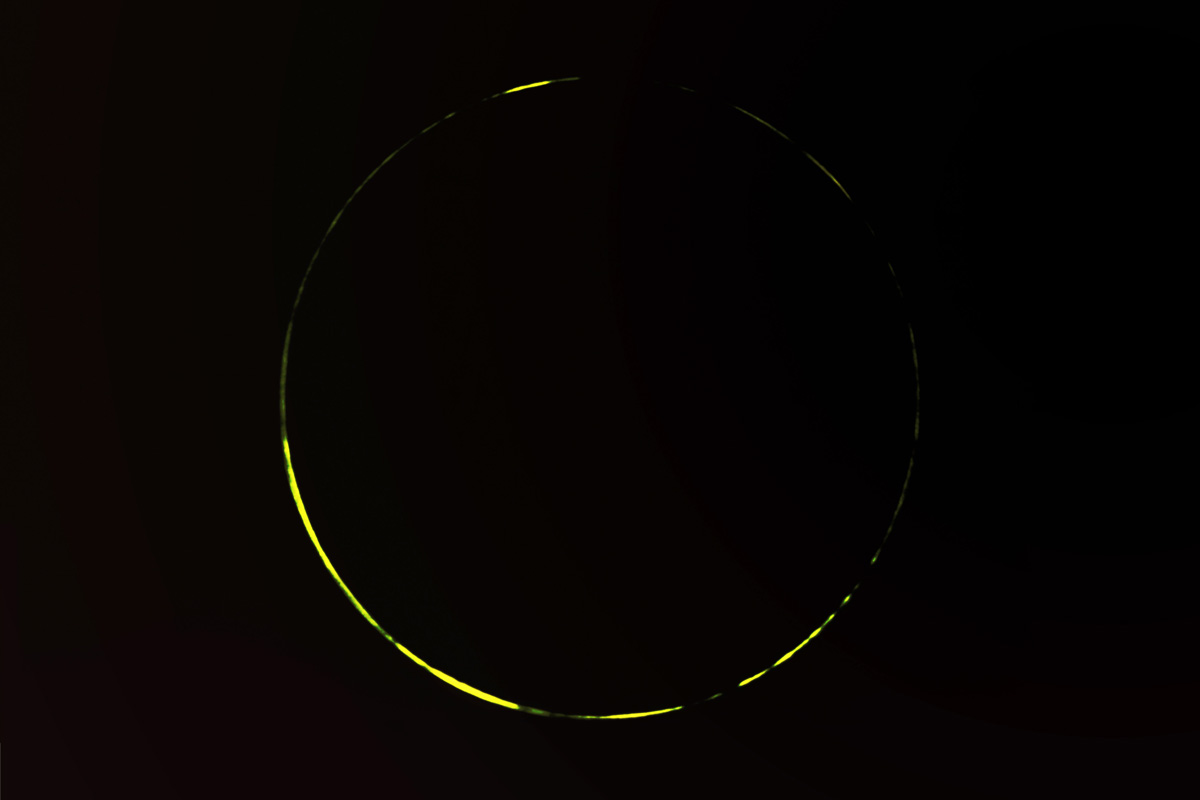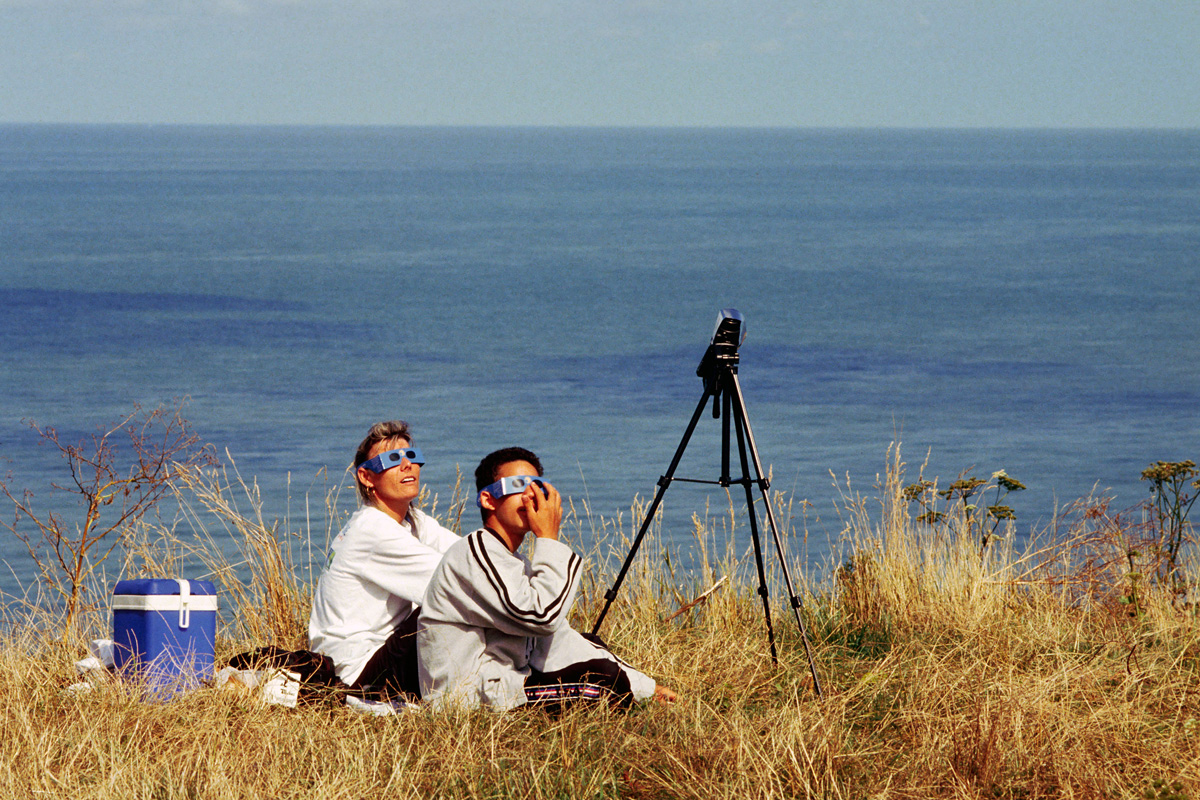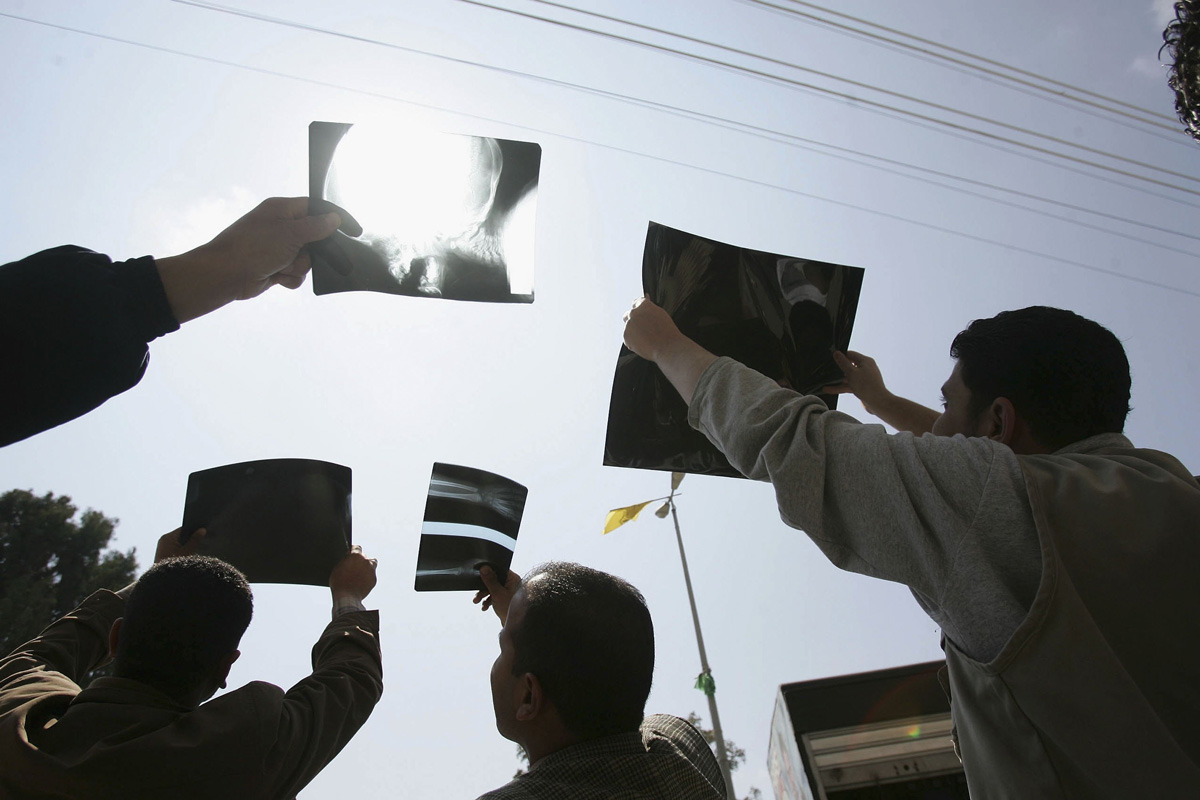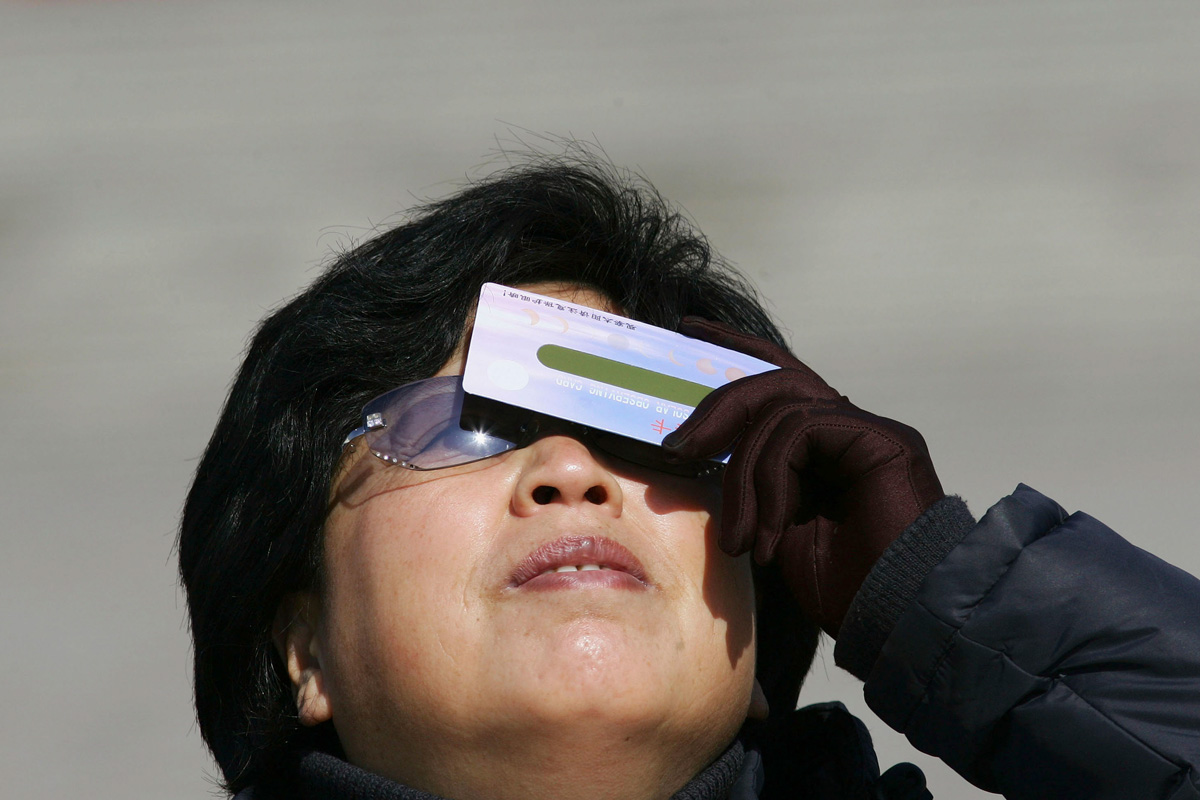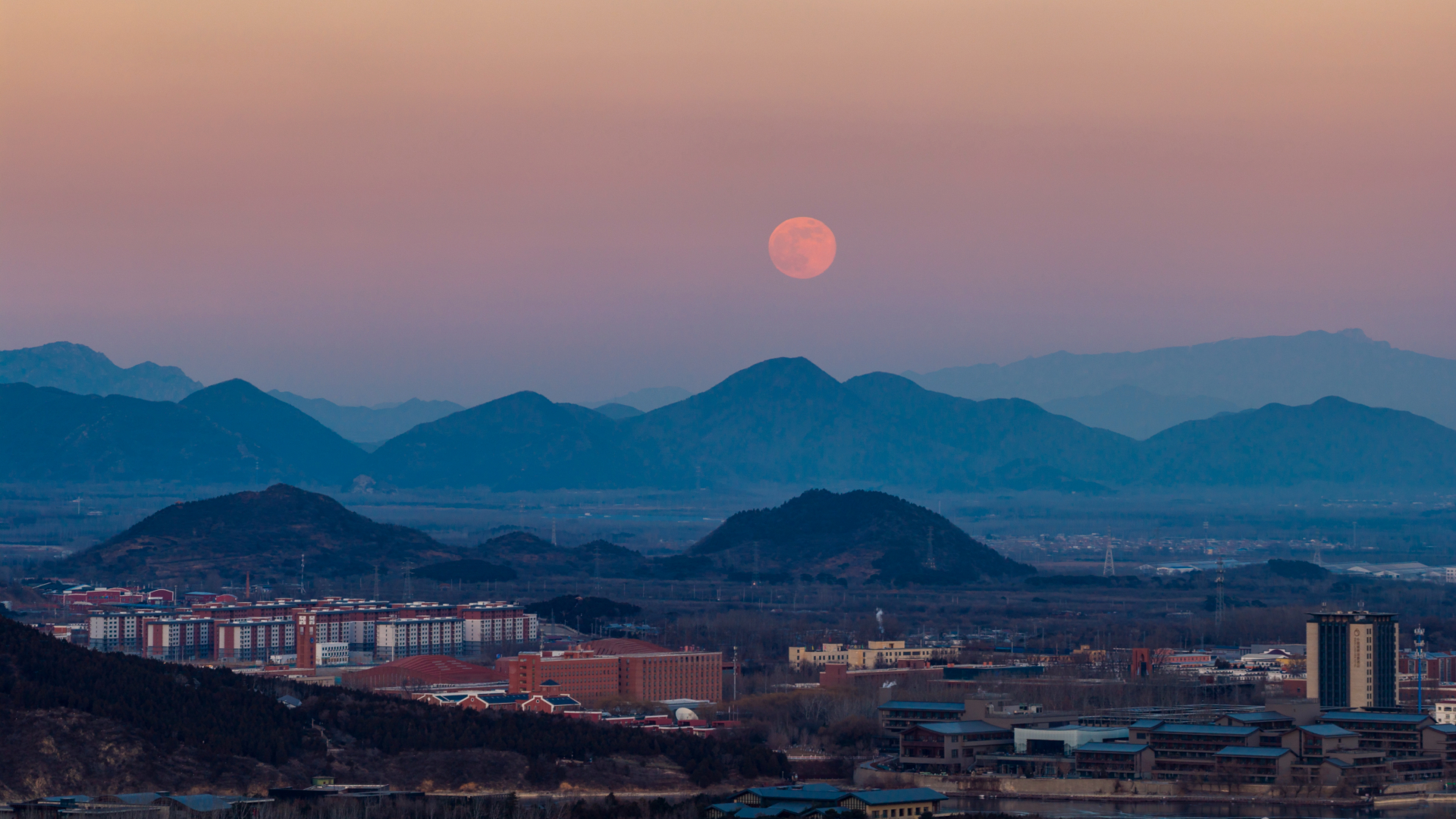A Brief History of Solar Eclipses, From 1900 to 2017 (Gallery)
Fluffy glow
A total solar eclipse observed from the Harvard College Observatory in March 1970.
Telescopes ready
American scientists prepared to observe the total solar eclipse in Kamen-na-Obi, in the Altai region of the USSR.
Partial band
The annular solar eclipse in May 1984 captured through a telescope.
A rose by any name
Five individual photographs, each exposed for a different radius of the sun's corona, combine here in a digital mosaic of the July 1991 total solar eclipse from Baja, California.
Look out above
People viewed a partial solar eclipse in May 1994 at the Museum of Science and Industry in Tampa, Florida. (Photo by Ken Helle)
Waterside view
Two people used paper eclipse glasses to view the August 1999 eclipse from France.
Family time
A woman helped her great-granddaughter view a partial solar eclipse at the Chabot Space and Science Center in Oakland, California, in June 2002. The moon covered two-thirds of the sun.
Breaking space news, the latest updates on rocket launches, skywatching events and more!
X-ray vision
In Gaza City, viewers used X-ray prints to view the partial eclipse in March 2006. (Note that using X-ray film or photographic film to view the sun can be dangerous, and is no longer recommended.)
Observing card
A partial solar eclipse was visible in most parts of China for about 2 hours in March 2007, and it was also visible in Japan and India. Here, a woman used a card with a solar filter embedded to view the eclipse in Changchun, Jilin province, China.
Missing bite
The March 2007 partial solar eclipse photographed through a dark filter from Nanjing, Jiangsu province, China.

Sarah Lewin started writing for Space.com in June of 2015 as a Staff Writer and became Associate Editor in 2019 . Her work has been featured by Scientific American, IEEE Spectrum, Quanta Magazine, Wired, The Scientist, Science Friday and WGBH's Inside NOVA. Sarah has an MA from NYU's Science, Health and Environmental Reporting Program and an AB in mathematics from Brown University. When not writing, reading or thinking about space, Sarah enjoys musical theatre and mathematical papercraft. She is currently Assistant News Editor at Scientific American. You can follow her on Twitter @SarahExplains.

